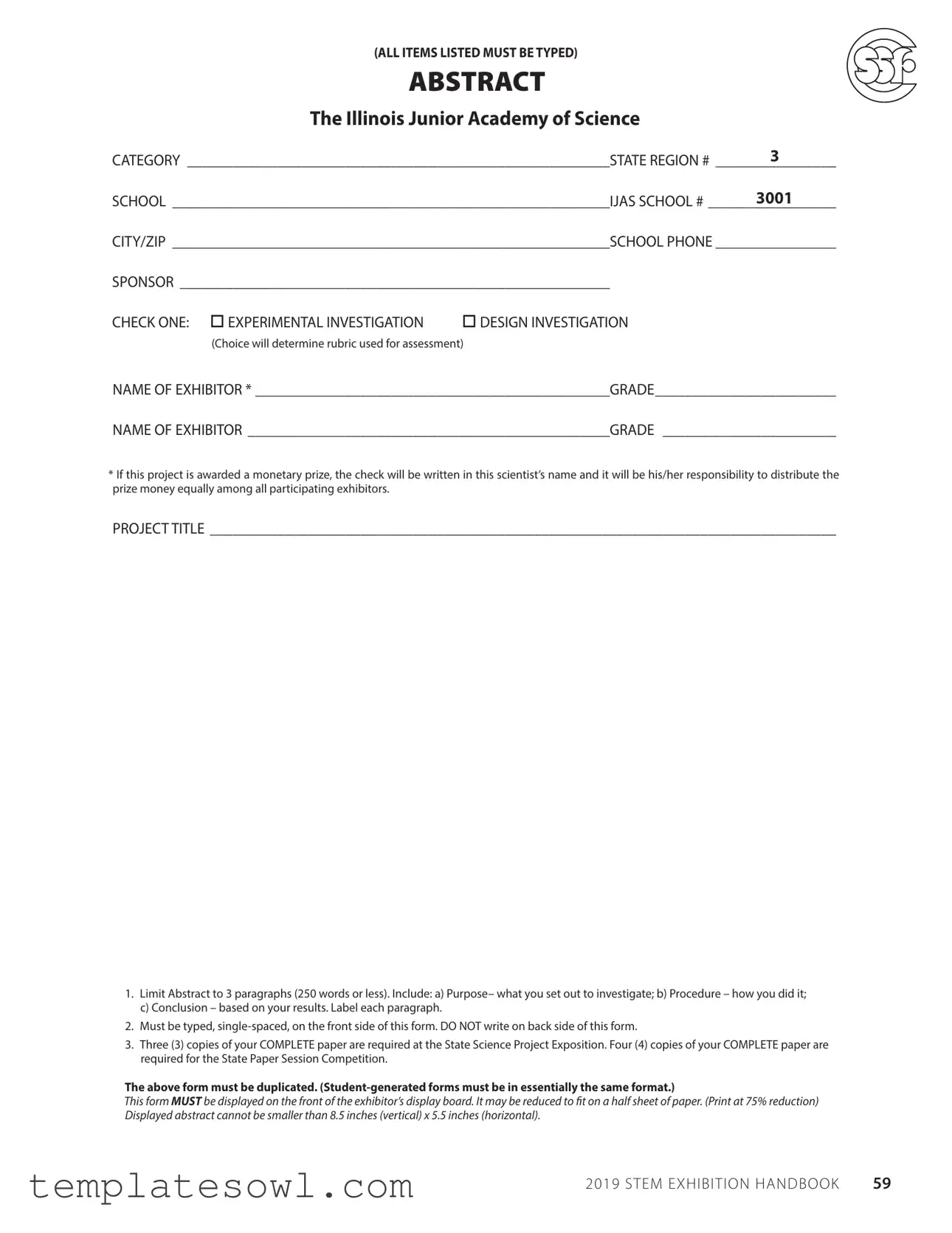What is the purpose of the Abstract Science Fair form?
The Abstract Science Fair form serves as a summary of your project, giving judges and viewers a concise overview of your research. It outlines your investigation's purpose, procedure, and conclusions. Completing the form accurately is crucial for highlighting the essential elements of your project.
What content should be included in the abstract?
Your abstract should be limited to three paragraphs, totaling no more than 250 words. Each paragraph must address a specific component: Purpose—describe what you set out to investigate; Procedure—explain how you conducted your research; and Conclusion—summarize your findings based on the results. Make sure to label each paragraph accordingly to enhance clarity.
Is there a specific format I need to follow?
Yes, the abstract must be typed and single-spaced on the front side of the form. It is essential to respect this format to ensure adherence to competition guidelines. Avoid using the back side of the form for any content.
How many copies of my paper are required for submission?
You will need to prepare three copies of your complete paper for the State Science Project Exposition. If you are entering the State Paper Session Competition, four copies are required. Additionally, make sure the form is duplicated for display purposes.
Where should I display the Abstract Science Fair form?
The completed form must be displayed on the front of your display board. You may reduce the form's size to fit on a half sheet of paper, but it should not be printed smaller than 8.5 inches tall by 5.5 inches wide. This ensures visibility and compliance with competition rules.
What happens to the prize money if my project wins?
If your project receives a monetary prize, the check will be made out to the primary exhibitor listed on the form. It is the responsibility of that exhibitor to distribute the prize money equally among all team members involved in the project. This component ensures fairness in sharing the reward for collaborative efforts.
Are there any restrictions on how I can present my abstract?
Yes, you are restricted to the specified format and presentation guidelines. The abstract must be typed, and you cannot write on the back of the form. Be sure to present a clear, well-organized summary that is visually compliant with size and formatting requirements for display.
What types of investigations are accepted?
There are two types of investigations you can choose from for your project. You must check one option: Experimental Investigation or Design Investigation. Your choice will determine the rubric used for assessment, so select the type that best fits your project objectives.

